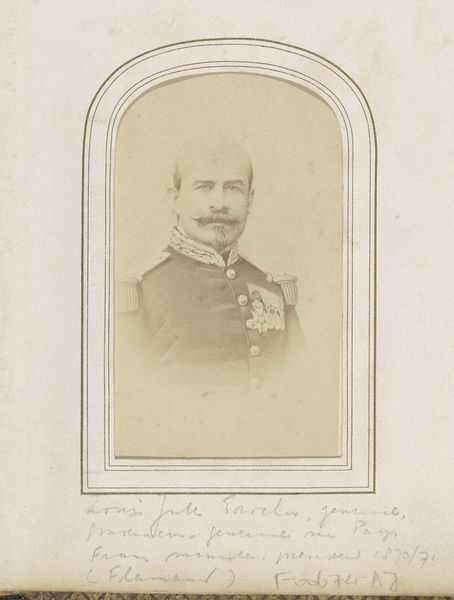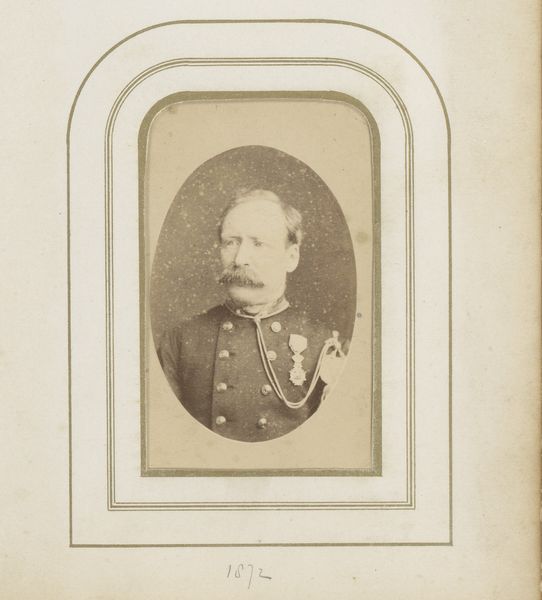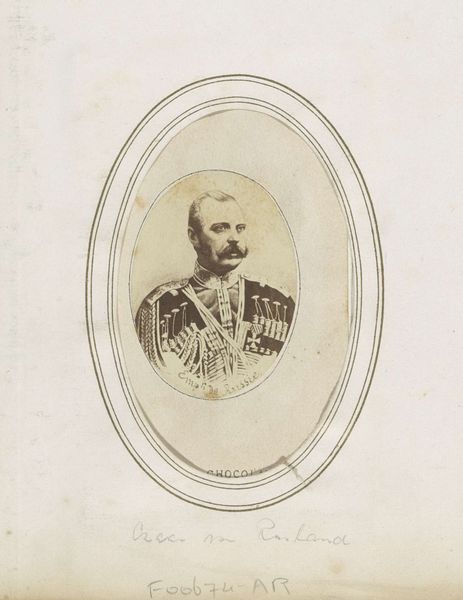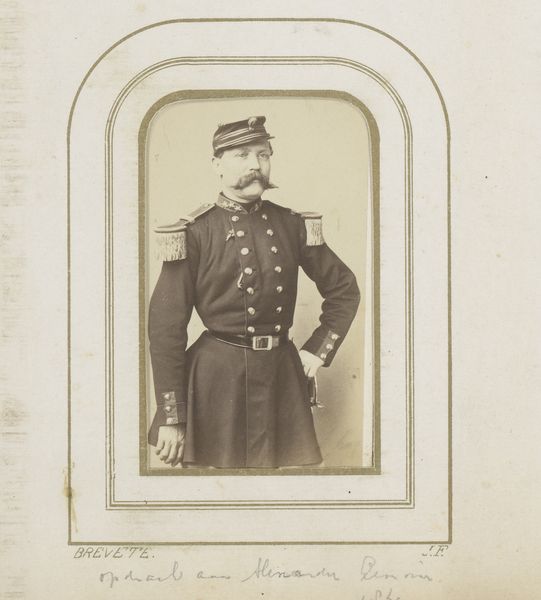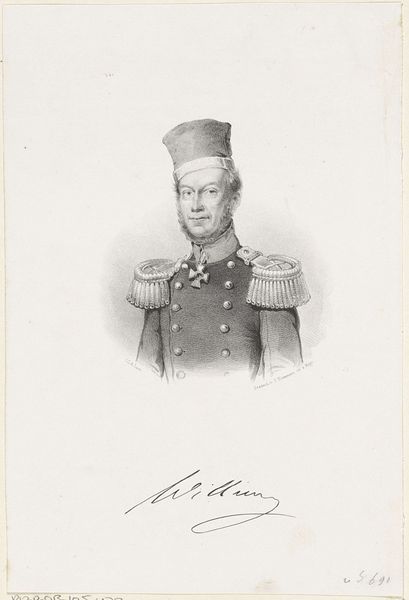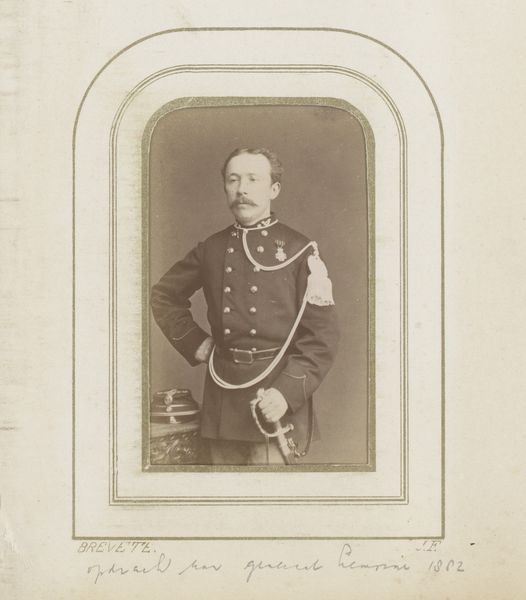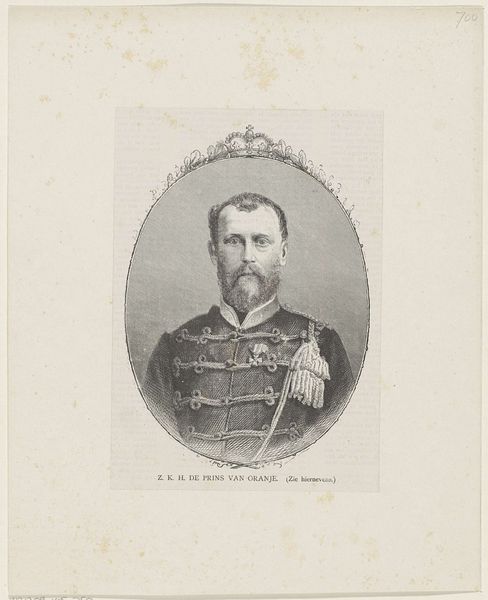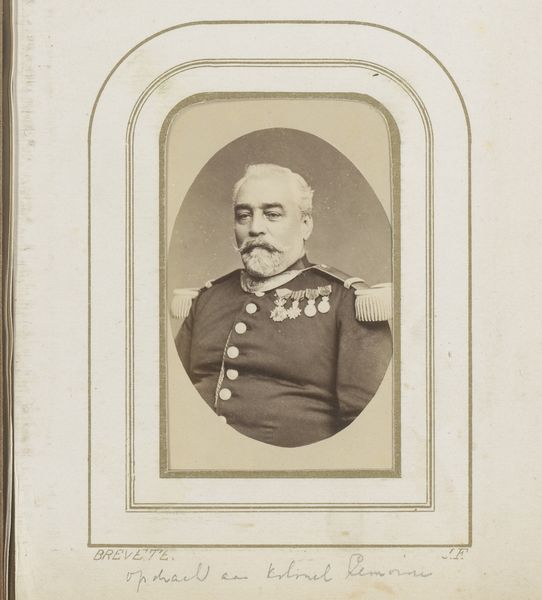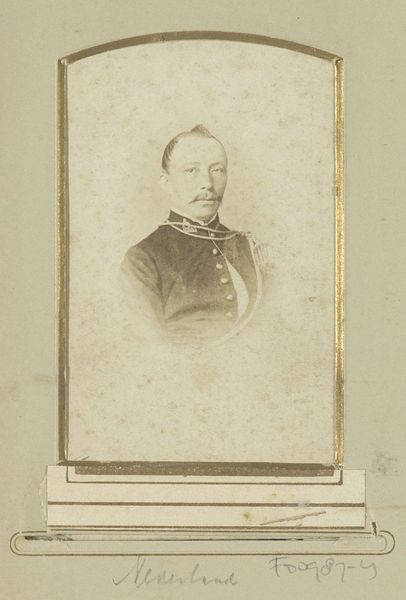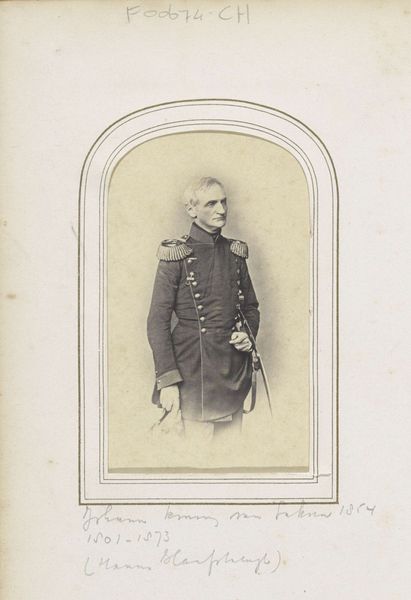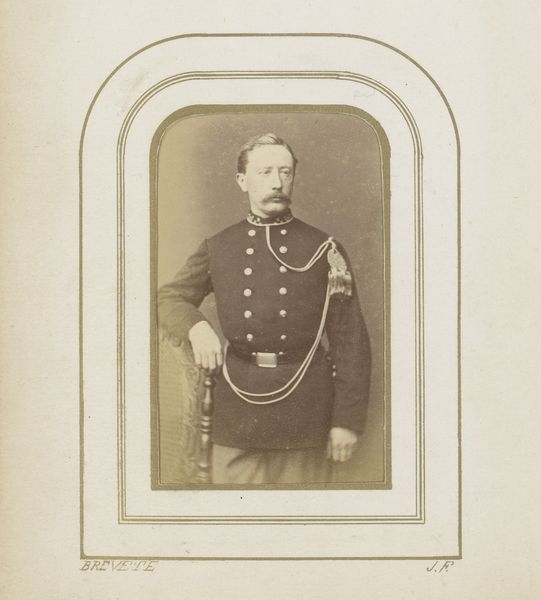
Portret van M.E.P.M. markies de MacMahon, maarschalk en president van Frankrijk 1860 - 1880
0:00
0:00
photography
#
portrait
#
photography
#
academic-art
Dimensions: height 95 mm, width 58 mm, height 104 mm, width 63 mm
Copyright: Rijks Museum: Open Domain
Curator: The stark formality! There's a clear, almost confrontational, sense of authority emanating from this portrait. Editor: Indeed. Let’s take a closer look. This is a photograph titled "Portret van M.E.P.M. markies de MacMahon, maarschalk en president van Frankrijk," or, Portrait of M.E.P.M. Marquis de MacMahon, Marshal and President of France. It was created sometime between 1860 and 1880 by E. Flamant. Curator: The tones are so muted. The light and shadow render an almost palpable sense of age. The materials and their production values indicate much about the time frame too, before photographic reproduction was easy. How would you interpret its effect within the historical context? Editor: As a representation of power in the Second Empire. Think about photography's role in image dissemination. Here was a man shaping French policy, using reproducible technologies for promotion and self-fashioning on a grand scale. Consider the studio, too; it has “Flamant” with the address. These photographic studios played a pivotal role in visualizing social hierarchies, as much as aristocratic paintings did, yet through novel means accessible to the rising bourgeoisie. Curator: A perfect illustration of how photographic processes could become industrialized. These portraits would have been part of that early visual economy of political display and circulation. Think of the albumen prints, the skilled darkroom practitioners, the retouching…a whole new labor system erected to fabricate status! Editor: Exactly! We see the physical presentation being carefully managed. It isn't a spontaneous snapshot but a constructed, public image that helped create MacMahon's position in French history. The gaze is very intentional, presenting the power of the sitter through visual form. Curator: And one can just imagine all the prints circulating… how this photograph contributed to constructing a certain aura, a certain mode of embodying political leadership during a transformative period of media culture. The materiality reflects the context of the photographic apparatus itself, how this one object then gets disseminated into a political-social schema. Editor: Definitely food for thought. For me, this is an important example of the intertwined relationships between photography, politics and history. Curator: And, conversely, a peek into how power presents itself in the midst of photographical making.
Comments
No comments
Be the first to comment and join the conversation on the ultimate creative platform.
